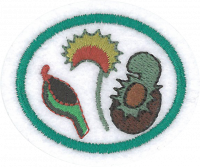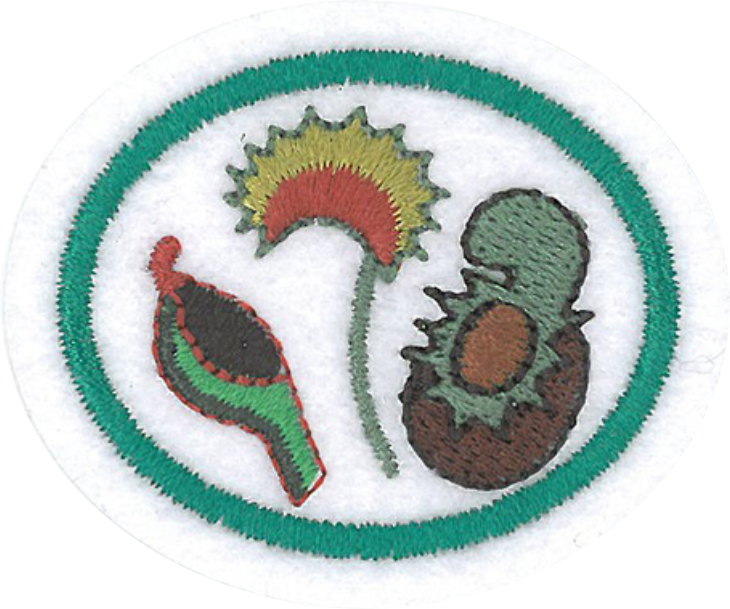AY Honors/Predatory Plants/Requirements
1. Have the Flowers or Bogs & Fens Honor.
2. What characteristics make a plant a predatory plant?
3. What is a murderous plant? Explain the difference between murderous and predatory plants. Give an example of a species of murderous plant that is not predatory.
4. What environmental conditions favor predatory plants?
5. What are the two categories of mechanisms used by predatory plants for trapping and consuming prey?
6. What is the process of "digestion" like in these plants and how do they get the necessary nutrients from the insects?
7. Identify at least one predatory plant that is believed to have homeopathic uses. Discover if there are ways that murderous or predatory plants can be harmful to humans and explain how.
8. List characteristics of the following types of predatory plants. Create an organized image notebook or slideshow with names, brief descriptions and images to illustrate what was learned about each species.
- a. Pitfall traps
- i. Pitcher:
- 1) Simple (2 species)
- 2) Hooded (3 species)
- 3) Balloon (2 species)
- ii. Monkey cup (3 species)
- iii. Moccasin lid (1 species)
- iv. Urn (1 species)
- b. Flypaper traps
- i. Butterwort (2 species)
- ii. Sundew (2 species)
- c. Snap traps (2 species)
- d. Bladder traps (2 species)
- e. Lobster pot traps (1 species)
- f. Combination traps (1 species)
- g. Borderline traps (1 species)
9. Personally observe three predatory flowering plants in nature, botanical garden or nursery. Obtain one specimen and maintain it for a minimum of two months. Make written observations about the plant’s care and feeding.
10. Predatory plants have characteristics that avail themselves to life applications. Find a life lesson and associated Bible passage that arise out of your study with predatory plants. Share this as a worship thought in a church or youth ministry setting.


